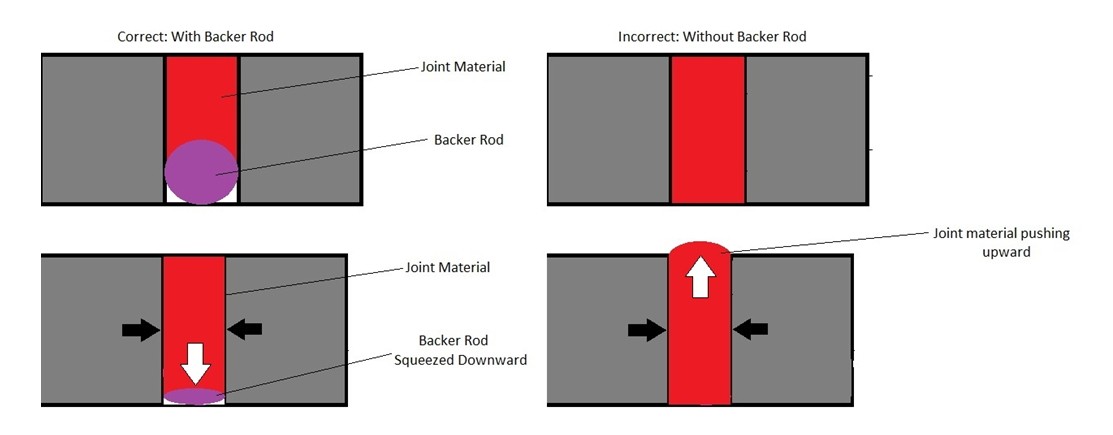Filling expansion joints in concrete floors when installing a polymer flooring system can be a little more complicated than it may seem. There are many ways to fill a joint, and some contractors sometimes don’t fill them at all. What are the pros and cons of filling expansion joints in concrete floors, and what should you use to fill them?
Joints are cut into concrete after being poured to control cracking during times of shrinking and expansion. There are two main types of joints: control joints and expansion joints. Control joints are usually a little bit thinner at 3/16 to 1/4” and are used to help deter cracks away from a more resistant line in the floor. Expansion joints are usually at least ½” thick and sometimes are filled with a fibrous material. These are used to separate slabs and concrete from other parts of the structure and are usually used to section off larger areas, rooms, or slabs poured at different times.
Typically, joints are filled to give the floor a monolithic appearance, and make the floor easier to clean to avoid any form of concrete contamination. Also, filling expansion joints in concrete floors prevents the shoulder of the joint from fracturing because there is no edge exposed. However, there are some negative effects that can occur after filling a joint. For example: The epoxy on top of the joint can crack, the joint material can become disbonded from the walls of the joint, or the joint material can protrude upwards, creating a lump in the floor. Of course, most of this stems from poor installation techniques or using the wrong type of material.
A flexible epoxy or polyurea with high elongation is an ideal material to use when filling joints. When the joints diverge, the material in the joint needs to be able to expand as well. When a rigid epoxy with no elongation is filling the joints, the floor will either crack, or the joint material will become disbonded from one of the inner walls of the joint. Likewise, when the joints converge, the material in the joint needs to be able to squeeze together, instead of just crack and crumble. It is important to note that the use of backer rod is also necessary when filling expansion joints in concrete floors. Backer rod is a spongey soft rod that is compacted into the base of the joint. When the joint contracts, the joint filler has two directions to squeeze: up or down. If it squeezes upward, there will be a lump in the floor and the epoxy topcoats will likely crack. The soft spongey backer rod assures that the path of least resistance is downward. The same reasoning applies to a joint without backer rod. If the whole joint is filled with high elongation epoxy or polyurea, when the joint converges, the joint filler has nowhere to go but upward.
If done right, filling the joints of a floor can be very aesthetically pleasing and leave no areas for dirt to be trapped. Using a high elongation epoxy or polyurea that can flex and bend when the concrete expands and contracts will help assure there are no issues with your polymer floor system.
Don’t know whether to re-coat, repair or replace your industrial floor? Our Industrial Flooring Self-Assessment Tool can help you determine the ideal solution for your unique application.
- A Faster Cure for Flooring Needs: Polyaspartics in Action - April 8, 2025
- The Case for Epoxy Mortar in Manufacturing - April 8, 2025
- Epoxy Mortar Flooring: Built for Heavy-Duty Performance - March 29, 2025


